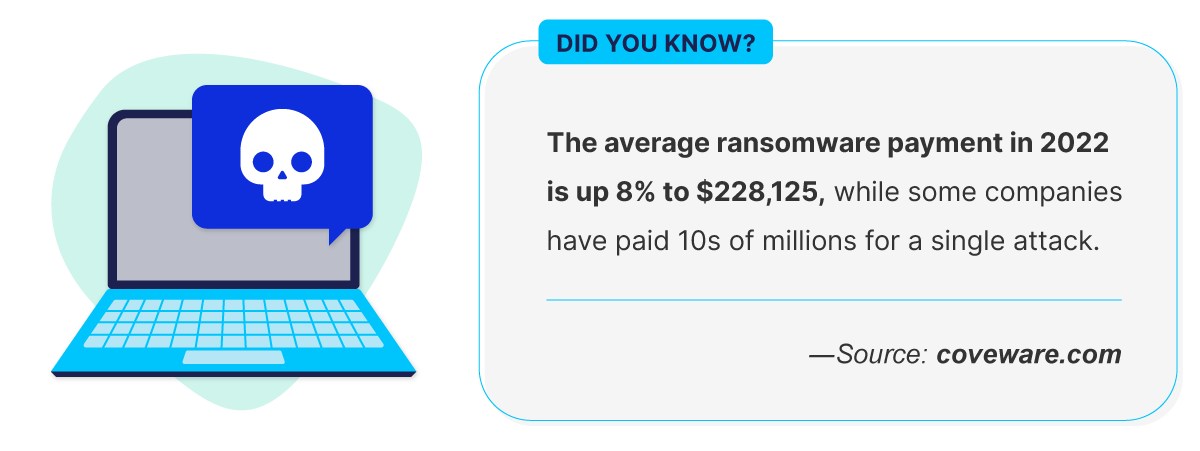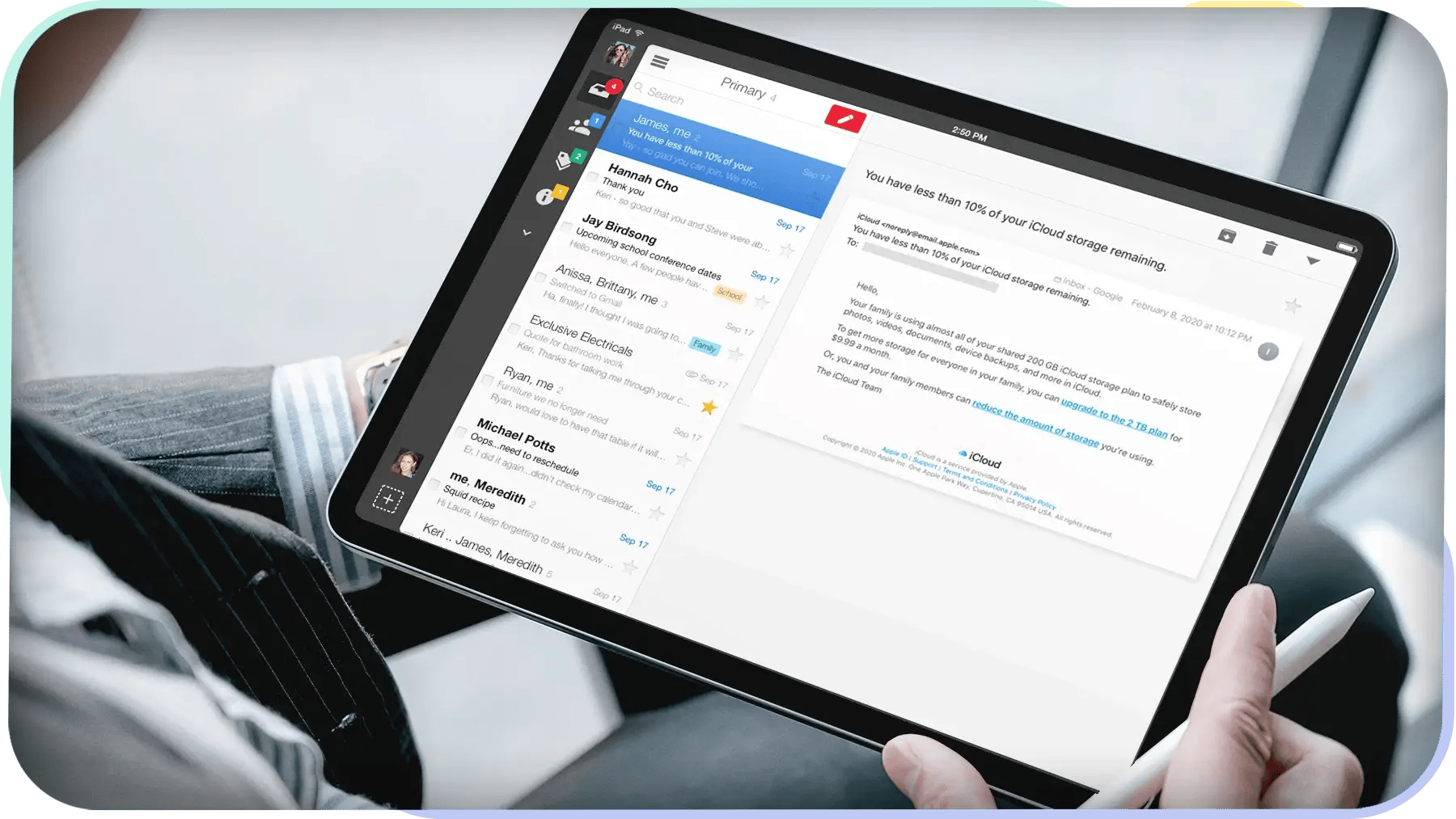- Products
- Use Cases
- Process contractors and validate credentials
- Improve facility compliance to industry standards
- Improve speed of visitor check-in process
- Screen visitors or restrict access to my facility
- Automate my reception experience
- Improve and automate my facility evacuation process
- Manage facility security across multiple locations
- Industries
- Pricing
- Resources
- Company
5 Ways to Prevent Security Breaches in the Workplace
September 30, 2022
Over 60% of companies in the Americas had a data breach within the past year. Technology makes communication and coordination possible for enterprises and large manufacturers to manage employees and projects at scale. But our reliance on technology makes us vulnerable, especially when servicing large volumes of people.
Common causes of security breaches and data leaks can result from your software; using outdated technology, vulnerabilities, or misconfigured settings. Potential exposures are much higher in enterprises with hundreds or thousands of people. Default and recycled passwords or poor personal security hygiene leave gateways into your software. Organizations need the right tips, strategies, and tools to prevent these common errors.
A security breach can cause expensive damage and endanger your business, so it is vital to have strategies and policies to weather these security storms.
The Challenges of Preventing Security Breaches
Falling victim to a cyber-attack means losing revenue, productivity, and client trust. In many cases, companies fail to prevent ransomware attacks because of their security flaws and ignorance of how to protect sensitive information like operating systems' data, financial records, and confidential company information.

Security breaches are also more likely when many people have access to sensitive information or with many remote employees. In these instances, tracking access becomes more complex, increasing the risk of leaked data.
Human error, such as sharing passwords or leaving a laptop unsecured, are other common causes. The multiple variables and factors for enterprise security make preventing security breaches a significant challenge. But with a smart team and effective breach prevention practices, you can reduce the risk.
5 Tips for Security Breach Prevention in Enterprise Facilities
Your security and IT teams play a vital role in security breach prevention and should create practical policies and empirical measures to prevent security breaches of any type. Here are some effective data and workplace security best practices to minimize the risk of security breaches in your business.
-
Develop Data Security Protocols
Developing robust data security protocols to mitigate known risks and vulnerabilities. Data security protocols are systems with the potential to block access to personally identifying information and other confidential data. Businesses implement these systems to protect data from unauthorized users, applications, services, or devices.
Securing data also helps organizations meet regulatory requirements. Proper encryption and data protection help to meet GDPR compliance, avoiding fines and penalties.
Data security protocols include detailed policies, complex passwords, and procedures for handling, storing, and securing data. Companies must also ensure all employees have proper training on these protocols and understand their importance.
By taking these steps, businesses can help to ensure that their data is safe from unauthorized access or theft. In an attempted breach, companies with strong data security breach prevention and protocols will be better prepared to quickly contain the damage and minimize the impact on their operations.
-
Provide Regular Employee Security Awareness Training
In today's business environment, employee security awareness training is necessary for maintaining a safe and secure workplace. With the rise of sophisticated cyber-attacks like phishing attempts, ransomware attacks, and malware, businesses must do everything possible to keep their networks from being compromised.

Cyber-attacks have become more sophisticated, with greater success fooling employees.
One of the best ways to protect your networks is by providing employees with security awareness training.
Teaching employees how to spot potential threats and properly handle sensitive data reduces the likelihood of a security breach. In addition, regular training can also help employees stay up to date on the latest security threats and best practices.
-
Limit Access to Sensitive Data and Encrypt to Prevent Unauthorized Access
The more people with access to your data, the higher the risk of security breaches. Therefore, limiting the number of people who have access to sensitive data is crucial to preventing unauthorized access.
For example, the iLobby facility management platform allows organizations to assign distinct access levels. Provide admin access to individuals who need full access, or provide more limited options. Improving mailroom management, for example, wouldn't require employees to see which visitors are signed in. But they do need access to modules like DeliveryOS sign packages in and out. Similarly, our PIAM software allows you to automate physical access management with policy-based workflows.
Another way to prevent unauthorized access to sensitive information is encrypting. Encryption protocols like PGP or Kerberos help businesses form their own security code, ultimately securing their communication and connection. Ensuring compliance with data privacy regulations like HIPAA, PCI-DSS, and GDPR limits the data to particular users and prevents leaks.
Learn how to apply automation to improve facility compliance to industry standards.

-
Always Back Up Data to Secure Networks and Install a Firewall
As fast as enterprise technology innovates and improves, security breach techniques keep pace. Therefore, you should always be prepared for the worst security attack scenario and back up data to secure networks.
With secure and routine backups, IT can recover data quickly and easily, which minimizes downtime and promptly restores your network.
Another way to reduce security threats is by installing firewalls, which help prevent unauthorized access and monitor network activity. You can significantly reduce the chances of a security breach by having backup data and firewall protection.
-
Manage Visitors with a Standardized Check-In Process
Whether or not you are worried about security, you should have a standardized check-in process to help prevent security breaches. By requiring all visitors to check in with a smart passcode system or badges, by having visitor access control, you can account for everyone and prevent unauthorized individuals from accessing the premises.
Additionally, multi-location visitor management can further help to prevent security breaches by ensuring that all visitors are adequately screened and authorized before they're allowed on the premises and easily identified with badges or other markers.
Streamline visitor management with VisitorOS >
Overcome Your Security Vulnerabilities with a Complete Solution
There are many ways to combat security vulnerabilities, but a comprehensive blend of preventive measures and response protocols is the most effective strategy.
By identifying potential risks and implementing solutions to mitigate those risks, you can reduce the likelihood of a security breach. If a breach does occur, having a well-developed response plan can help minimize the damage and ensure that critical data is protected.
Book an iLobby demo today to safeguard your data and systems from potentially devastating security breaches and build a safe and breach-free workplace.
Jeff Gladwish
Jeff Gladwish is the Chief Revenue Officer at iLobby where he spearheads the go-to-market strategy, driving the growth and adoption of our Facility and Visitor Management solutions. In 2023, Jeff was named one of Influitive’s Fearless 50 Customer-Led Marketing Leaders, an award that recognizes executives pushing the boundaries of customer marketing, advocacy, community, and loyalty.

